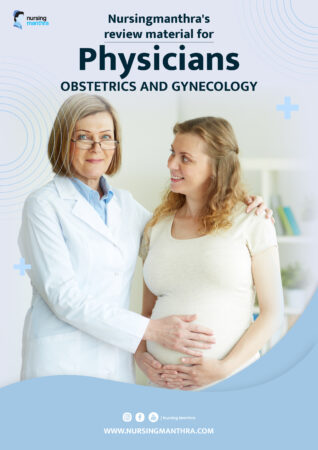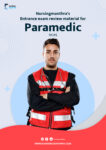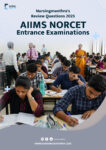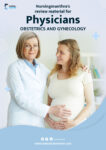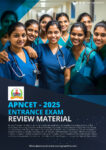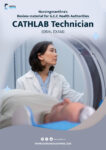1. A client undergoes a right mastectomy for carcinoma. When teaching the client post-mastectomy exercises, it is important for the nurse to:
A. Exercise both arms equally
B. Exercise the right arm only
C. Have the client wear a sling between exercise periods
D. Wait until the incision has healed
Correct Answer:
A. Exercise both arms equally
Rationale:
Post-mastectomy exercises are essential to restore shoulder mobility, improve circulation, and prevent complications such as lymphedema or frozen shoulder. It is important to encourage movement of both arms, unless contraindicated by the surgeon. Starting gentle exercises (as prescribed) soon after surgery helps prevent stiffness and maintains function.
Option B is incorrect because exercising only the affected arm is not balanced and may lead to asymmetry in mobility or strength.
Option C is incorrect because using a sling unnecessarily can lead to joint stiffness and muscle atrophy.
Option D is incorrect because early mobilization, even before the incision is fully healed (as directed), is typically encouraged to promote optimal recovery.
2. A nurse caring for a patient receiving a blood transfusion notes that the patient is wheezing and complaining of back pain. After stopping the transfusion, what is the nurse’s priority action?
A. Discontinue the IV
B. Notify the healthcare provider
C. Administer heparin
D. Raise the patient’s head
Correct Answer:
B. Notify the healthcare provider
Rationale:
Wheezing and back pain are signs of a potential transfusion reaction, possibly an anaphylactic or hemolytic reaction, which is a medical emergency.
The first action is to stop the transfusion, which the nurse has already done.
The next priority is to notify the healthcare provider immediately so appropriate interventions (e.g., epinephrine, antihistamines, corticosteroids) can be initiated.
Option A is incorrect because the IV line should be kept open with normal saline using new tubing to maintain venous access.
Option C is incorrect as heparin is not used in the treatment of transfusion reactions.
Option D (raising the head) may help breathing but does not address the root cause, and it is not the priority after stopping the transfusion
3. An aortic aneurysm operation is an example of which type of surgical intervention?
A. Elective
B. Urgent
C. Emergency
D. Diagnostic
Correct Answer:
B. Urgent
Rationale:
Surgical intervention for an aortic aneurysm can vary based on the size, location, and symptoms of the aneurysm.
If the aneurysm is large or symptomatic (e.g., causing back or abdominal pain or risk of rupture), urgent surgery is required to prevent life-threatening complications.
Elective surgery (Option A) may apply to small, asymptomatic aneurysms being monitored until they reach a certain size (typically >5.5 cm).
Emergency surgery (Option C) is done if the aneurysm ruptures, which is a critical, life-threatening situation.
Diagnostic procedures (Option D) are used to identify or confirm the presence of an aneurysm, not to treat it surgically.
So, in the context of an operation, the correct choice is B. Urgent, unless it has already ruptured, in which case it would become an emergency.
🚨 Is an aortic aneurysm operation an emergency?
✅ If the aneurysm has ruptured → it is an emergency surgery. This is life-threatening and requires immediate intervention to prevent death.
⚠️ If the aneurysm is large or symptomatic but has not ruptured → it’s considered urgent or sometimes elective, depending on how fast it’s growing and the risk of rupture.
🔍 So the correct answer depends on the situation:
Question revision (for clarity):
“An aortic aneurysm operation due to rupture is an example of which type of surgical intervention?”
A. Elective
B. Urgent
C. Emergency ✅
D. Diagnostic
✔️ Correct Answer: C. Emergency
Rationale:
A ruptured aortic aneurysm causes internal bleeding and severe hemodynamic instability. It requires emergency surgery to save the patient’s life.
4. According to Kübler-Ross, the five successive stages of death and dying are:
A. Anger, bargaining, denial, depression, acceptance
B. Denial, anger, depression, bargaining, acceptance
C. Denial, anger, bargaining, depression, acceptance
D. Bargaining, denial, anger, depression, acceptance
✅ Correct Answer:
C. Denial, anger, bargaining, depression, acceptance
🧠 Rationale:
Elisabeth Kübler-Ross identified five stages of grief that individuals often experience when facing death or significant loss:
Denial – “This can’t be happening.” A defense mechanism to buffer the shock.
Anger – Feelings of frustration and helplessness, often directed outward.
Bargaining – “If only…” or making deals with a higher power for more time.
Depression – Deep sadness as reality sets in.
Acceptance – Coming to terms with the loss or impending death.
Options A, B, and D present incorrect sequences.
5. Which of the following is an example of an atypical antipsychotic?
A. Haloperidol
B. Risperidone
C. Chlorpromazine
D. Fluphenazine
✅ Answer: B. Risperidone
Rationale: Atypical antipsychotics (second-generation) include risperidone, olanzapine, quetiapine. Others listed are typical (first-generation).
6. What is the recommended duration for surgical hand scrubbing by a scrub nurse?
A. 15 seconds
B. 30 seconds
C. 1 minute
D. 2–6 minutes
✅ Answer: D. 2–6 minutes
Rationale: Surgical hand scrub should be performed for 2–6 minutes to eliminate transient and reduce resident microorganisms.
7. How many chest compressions should be given in one minute during adult CPR?
A. 60
B. 80
C. 100–120
D. 140
✅ Answer: C. 100–120
Rationale: Recommended compression rate is 100–120 per minute during high-quality CPR.
8. What is “word salad” a sign of in speech disorders?
A. Aphasia
B. Expressive dysphasia
C. Schizophrenia
D. Dysarthria
✅ Answer: C. Schizophrenia
Rationale: Word salad, neologism, and clang association are disorganized speech symptoms typical in schizophrenia.
9. Where is a colostomy usually placed?
A. Jejunum
B. Duodenum
C. Ileum
D. Colon
✅ Answer: D. Colon
Rationale: Colostomy involves creating an opening in the colon (large intestine) to divert feces.
10. What does the P wave in ECG represent?
A. Atrial depolarization
B. Ventricular depolarization
C. Atrial repolarization
D. Ventricular repolarization
✅ Answer: A. Atrial depolarization
Rationale: The P wave indicates atrial depolarization — the electrical activity leading to atrial contraction.
11. Which of the following is a complication of Lasix (furosemide)?
A. Hyperkalemia
B. Hyponatremia
C. Hypovolemia
D. B and C
✅ Answer: D. B and C
Rationale: Furosemide causes excessive fluid and electrolyte loss, leading to hypovolemia and hyponatremia.
12. During neonatal intubation, if oxygen saturation drops suddenly, what is the immediate action?
A. Start CPR
B. Remove the tube and ventilate with bag-mask
C. Increase oxygen flow
D. Call the doctor
✅ Answer: B. Remove the tube and ventilate with bag-mask
Rationale: Desaturation may be due to failed intubation or obstruction. Re-ventilation is the priority.
13. What is the most common cause of postpartum hemorrhage?
A. Retained placenta
B. Uterine rupture
C. Uterine atony
D. Lacerations
✅ Answer: C. Uterine atony
Rationale: Uterine atony (failure of the uterus to contract) is the most common cause of PPH.
14. A sign of Alzheimer’s disease is:
A. Hallucinations
B. Sudden confusion
C. Memory loss and cognitive decline
D. Involuntary tremors
✅ Answer: C. Memory loss and cognitive decline
Rationale: Alzheimer’s is characterized by progressive memory loss, language impairment, and poor judgment.
15. If a nurse suspects patient neglect or abuse, what should she do first?
A. Inform the physician
B. Talk to the family
C. Report to the supervisor/authorities
D. Document and ignore
✅ Answer: C. Report to the supervisor/authorities
Rationale: Nurses are mandated reporters and must report any signs of abuse or neglect.
16. How to differentiate between renal failure and lower urinary tract obstruction?
A. Creatinine levels
B. History of infection
C. Bladder distension and retention
D. Urine color
✅ Answer: C. Bladder distension and retention
Rationale: Lower tract obstruction causes bladder retention/distension. Renal failure affects filtration without lower obstruction symptoms.
17. What is the correct order of the nursing process?
A. Planning, Diagnosis, Assessment, Implementation, Evaluation
B. Assessment, Diagnosis, Planning, Implementation, Evaluation
C. Diagnosis, Planning, Assessment, Implementation, Evaluation
D. Assessment, Planning, Diagnosis, Evaluation, Implementation
✅ Answer: B. Assessment, Diagnosis, Planning, Implementation, Evaluation
Rationale: The nursing process follows ADPIE: Assessment → Diagnosis → Planning → Implementation → Evaluation.
18. What should a nurse do if she notices a wrong drug prescribed by the physician?
A. Give it anyway
B. Inform the pharmacist
C. Verify with the physician
D. Document and ignore
✅ Answer: C. Verify with the physician
Rationale: Nurses must clarify doubtful or wrong prescriptions with the prescriber before administration.
19. What is the main goal of palliative care?
A. Cure the disease
B. Prevent complications
C. Relieve suffering and improve quality of life
D. Extend life at all cost
✅ Answer: C. Relieve suffering and improve quality of life
Rationale: Palliative care focuses on comfort and quality of life in serious illnesses.
20. After a DNR is discussed and decided by the physician, what should the nurse do when family asks questions?
A. Tell them not to worry
B. Clarify the DNR order without involving the doctor
C. Refer them back to the physician for further discussion
D. Say resuscitation will still be attempted
✅ Answer: C. Refer them back to the physician for further discussion
Rationale: The nurse should support but not make medical decisions; the physician must clarify DNR discussions.
21. Which of the following is a contraindication for oral contraceptive pills?
A. History of migraine with aura
B. Dysmenorrhea
C. Acne
D. Regular periods
✅ Answer: A. History of migraine with aura
Rationale: Migraine with aura increases the risk of stroke with estrogen-containing contraceptives and is a contraindication.
22. What is a classic sign of pyloric stenosis in an infant?
A. Bloody diarrhea
B. Projectile vomiting
C. High fever
D. Constipation
✅ Answer: B. Projectile vomiting
Rationale: Pyloric stenosis causes forceful, projectile, non-bilious vomiting due to obstruction of the pyloric sphincter.
23. Which precaution is most important when caring for a patient with MRSA?
A. Reverse isolation
B. Airborne precautions
C. Contact precautions
D. Droplet precautions
✅ Answer: C. Contact precautions
Rationale: MRSA spreads through direct contact, so strict contact precautions (gloves, gown, hand hygiene) are essential.
24. Which of the following is an effective nursing intervention for managing pressure ulcers?
A. Massage over red areas
B. Keep skin dry and reposition every 2 hours
C. Use alcohol wipes on wound
D. Keep patient immobile
✅ Answer: B. Keep skin dry and reposition every 2 hours
Rationale: Repositioning and maintaining dry, clean skin reduce pressure and moisture, aiding in ulcer prevention and healing.
25. Most hospital-acquired infections are spread through:
A. Air
B. Food
C. Water
D. Hands of healthcare workers
✅ Answer: D. Hands of healthcare workers
Rationale: Poor hand hygiene is the most common mode of nosocomial infection transmission.
If you would like access to more questions for the Assistant Nurse Prometric Exam, you can purchase the complete study material using the link provided below. For any assistance or to request the material, please contact NursingManthra via WhatsApp.” +971502515717




